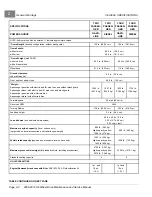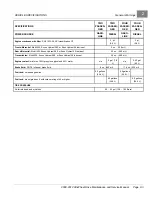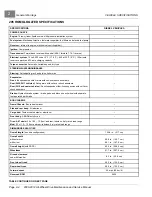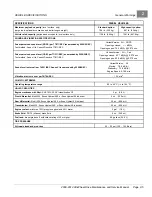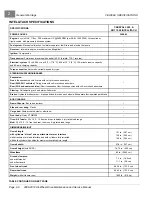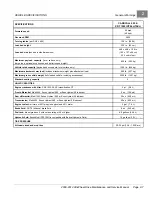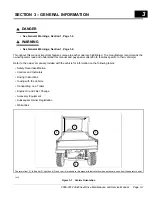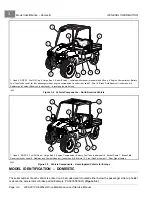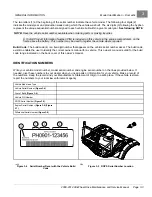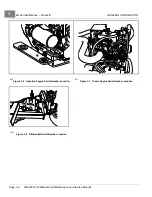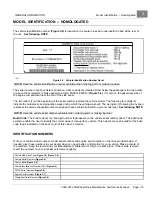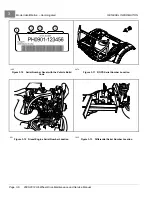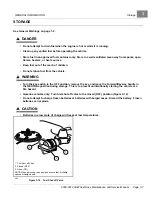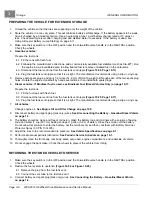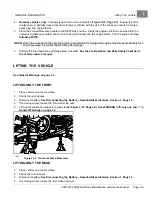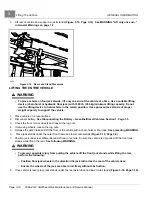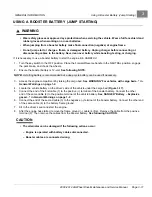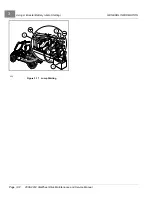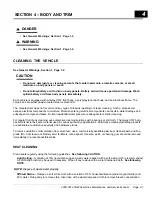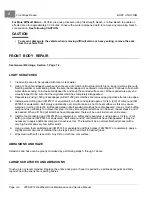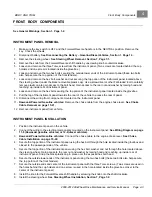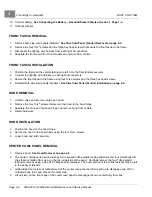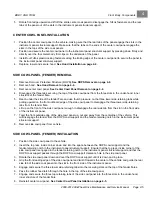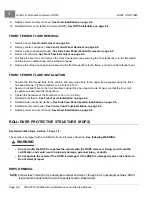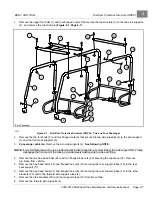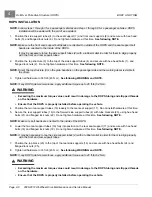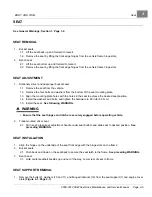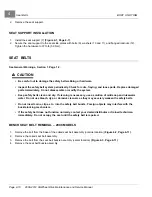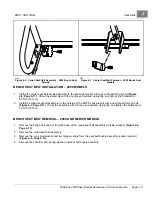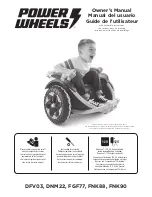
3
Storage
GENERAL INFORMATION
PREPARING THE VEHICLE FOR EXTENDED STORAGE
1.
Unload the vehicle so that the tires are supporting only the weight of the vehicle.
2.
Store the vehicle in a cool, dry place. This will minimize battery self-discharge. If the battery appears to be weak,
have it charged by a trained technician. Use an automotive-type 12-volt battery charger rated at 10 amps or
less. Check electrolyte level after charging and add distilled water if necessary. If the battery is dead, see
Using A Booster Battery (Jump Starting) on page 3-11.
3.
Make sure the key switch is in the OFF position and the Forward/Reverse handle is in the NEUTRAL position.
Chock the wheels.
4.
Gasoline vehicles:
Prepare the fuel tank.
4.1. Fill the tank with fresh fuel.
4.2. Following the manufacturer’s directions, add a commercially available fuel stabilizer (such as Sta-Bil
®
). Run
the engine in a well-ventilated area to allow treated fuel to replace untreated fuel in the carburetor.
4.3. Disconnect the fuel vent line from the fuel tank vent nipple
.
4.4. Plug the fuel tank vent nipple so that it is air tight. The manufacturer recommends using a slip-on vinyl cap.
5.
Remove both spark plugs, and pour 1/2 ounce (14.2 mL) of SAE 10 weight oil through each of the two spark plug
holes. Rotate the engine crankshaft by hand several times, then install both spark plugs.
6.
Diesel vehicles: If Biodiesel fuel is used, see Biodiesel Fuel (Diesel Vehicles Only) on page 10-17.
Prepare the fuel tank.
6.1. Fill the fuel tank with fresh fuel.
6.2. Disconnect the fuel vent line from the fuel tank vent nipple
.
6.3. Plug the fuel tank vent nipple so that it is air tight. The manufacturer recommends using a slip-on vinyl cap.
7.
All vehicles:
Change engine oil.
See Engine Oil and Filter Change on page 10-9.
8.
Disconnect battery and spark plug (Gas only) wires.
See Disconnecting the Battery – Gasoline/Diesel Vehicle
on page 1-3
.
9.
The battery should be clean and free of corrosion. Wash the battery top and terminals with a solution of baking
soda and water (1 cup (237 mL) baking soda per 1 gallon (3.8 L) of water). Rinse the solution off the battery.
Do not allow this solution to enter the battery. Let the terminals dry and then coat them with Battery Terminal
Protector Spray (CC P/N 1014305).
10. Adjust the tires to the recommended tire pressure.
See Vehicle Specifications on page 2-1.
11. Perform semiannual periodic lubrication.
See Periodic Service Schedule on page 10-1.
12. Thoroughly clean the front body, rear body, seats, cargo bed, engine compartment, and underside of vehicle.
13. Do not engage the park brake. Chock the wheels to prevent the vehicle from rolling.
RETURNING THE STORED VEHICLE TO SERVICE
1.
Make sure the key switch is in the OFF position and the Forward/Reverse handle is in the NEUTRAL position.
Chock the wheels.
2.
Restore the fuel system to operation
(Figure 10-24 or Figure 10-25)
.
2.1. Remove the plug from the fuel tank vent.
2.2. Connect the vent tube to the fuel tank vent.
3.
Connect battery and spark plug (Gas only) wires.
See Connecting the Battery – Gasoline/Diesel Vehicle
on page 1-4
.
Page 3-8
2008-2012 All-Wheel Drive Maintenance and Service Manual
Summary of Contents for Carryall 295 SE
Page 2: ......
Page 20: ......
Page 28: ......
Page 58: ......
Page 66: ......
Page 100: ......
Page 122: ......
Page 150: ......
Page 157: ......
Page 190: ......
Page 197: ......
Page 236: ......
Page 284: ......
Page 386: ......
Page 394: ......
Page 442: ......
Page 452: ......
Page 454: ......
Page 455: ......
Page 456: ......

